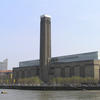More about Tree
- All
- Info
- Shop

Contributor
If there is a social or geopolitical cause, you can probably associate it with Ai Weiwei’s work.
Environmentalism, urbanization, materialism, suppression of original Chinese culture, individualism. He's done it all. This particular sculpture was inspired by a native Chinese custom originating in the town of Jingdezhen. The tradition was that vendors would sell tree trunks or roots with specific characteristics as sculptures to display at home. Tree is made up of camphor, cedar and ginko wood, all collected from the mountains of southern China and sold by those vendors. Hurray for locally-sourced materials!
Upon closer look, you may be disappointed that you can see all the stuff that holds the piece together but Weiwei is way, way ahead of you. Viewers are not supposed to be fooled into thinking that this is an actual living tree. He made it so you can see all the bolts and joints because the tree represents China and China is all about the individual pieces combining to make a whole society. The thing is huge, at 22 feet tall and wide, and celebrates not only China but the indigenous Chinese custom that inspired the piece.
Tree is also reminiscent of Zen gardens, which rely on a very sensitive balance of trees, rocks, natural elements and the spaces between them. It also links mankind with nature and brings peace to people’s lives in a very circle-of-life kind of way. Refer to the Mufasa monologue in the Lion King for more information.
Through this piece Ai Weiwei communicates his concern about the decay of China’s connection with its history – an ongoing theme in his work. Weiwei shows a lot more compassion and concern for China than China does for him, as he has been removed from Sina Weibo, the most popular form of social media in China and has even been beaten by the police. Weiwei’s friction with Chinese government and their censorship and surveillance has inspired much of his work. Ai Weiwei commented, “My definition of art has always been the same. It is about freedom of expression[…] I don’t think anybody can separate art from politics. The intention to separate [the two] is itself a very political intention.”















